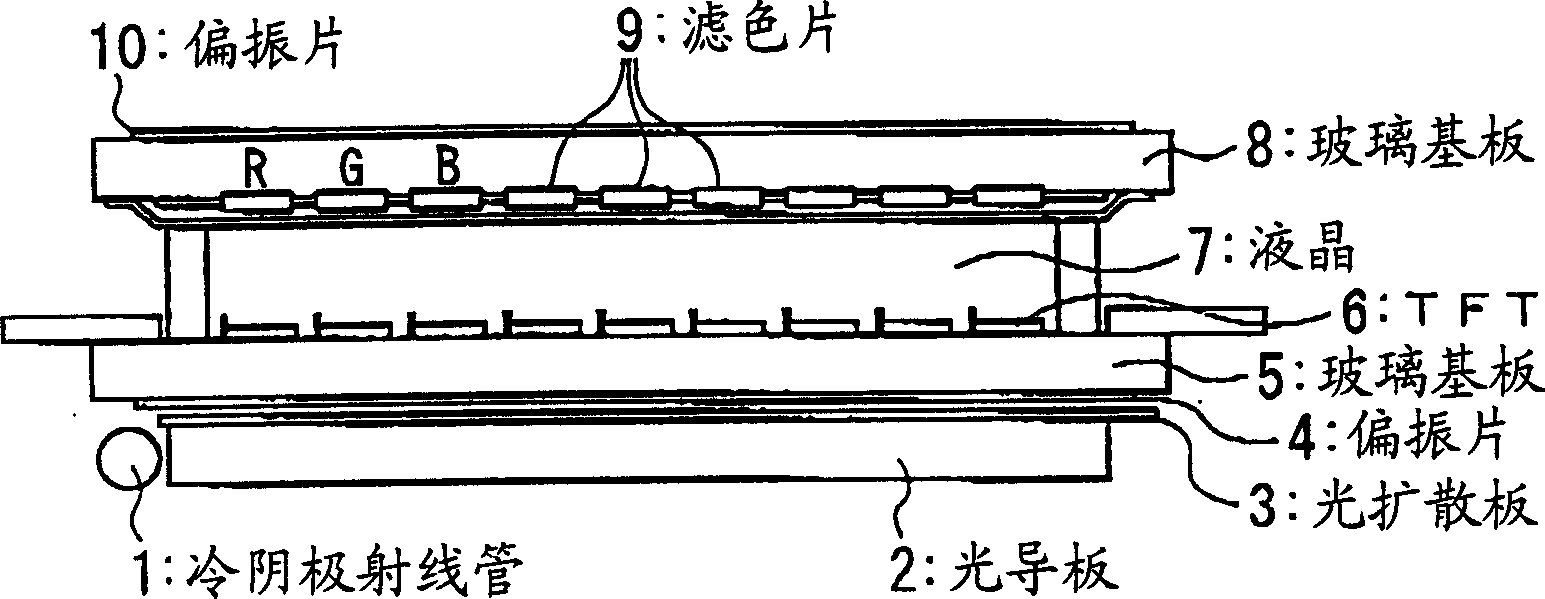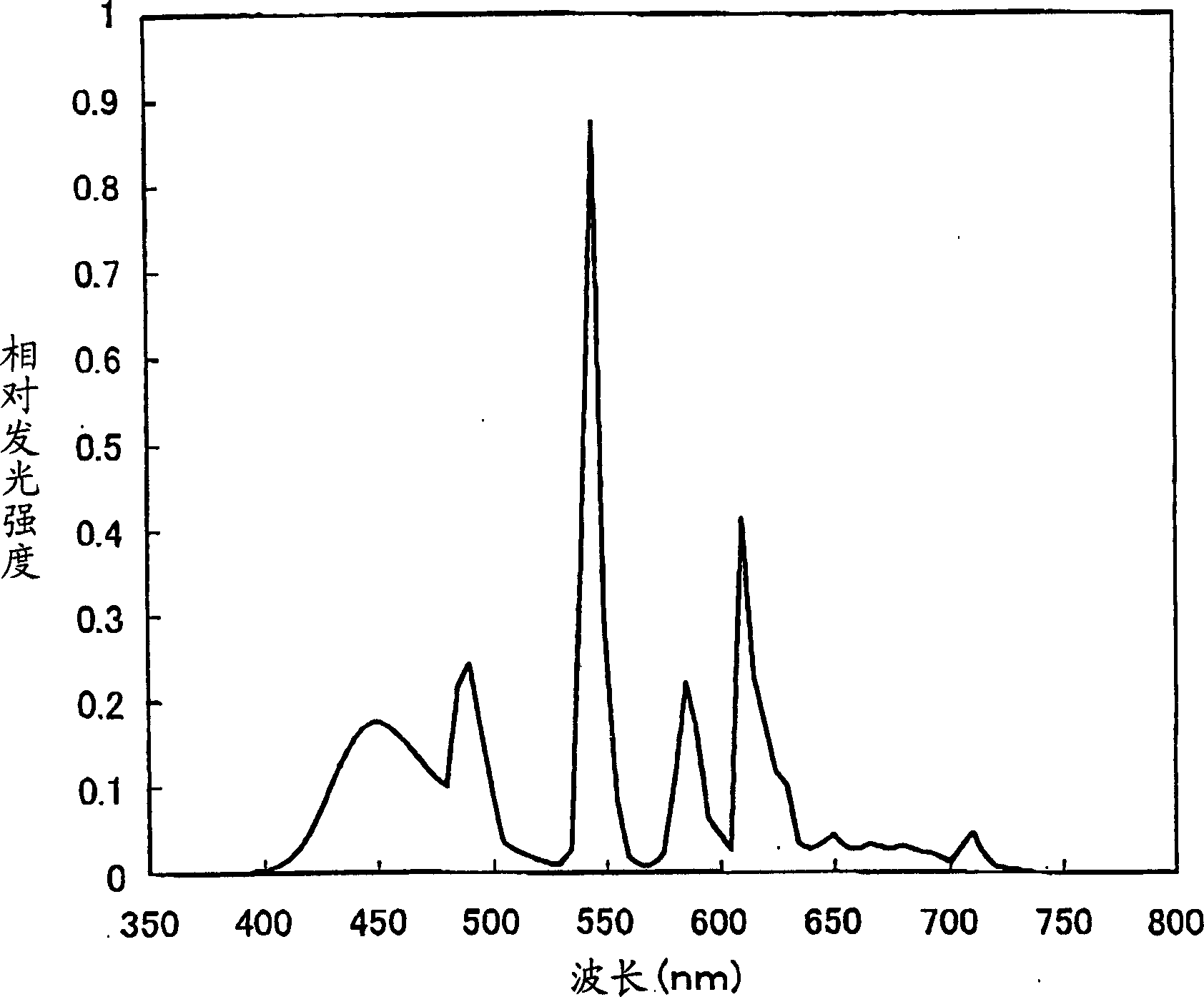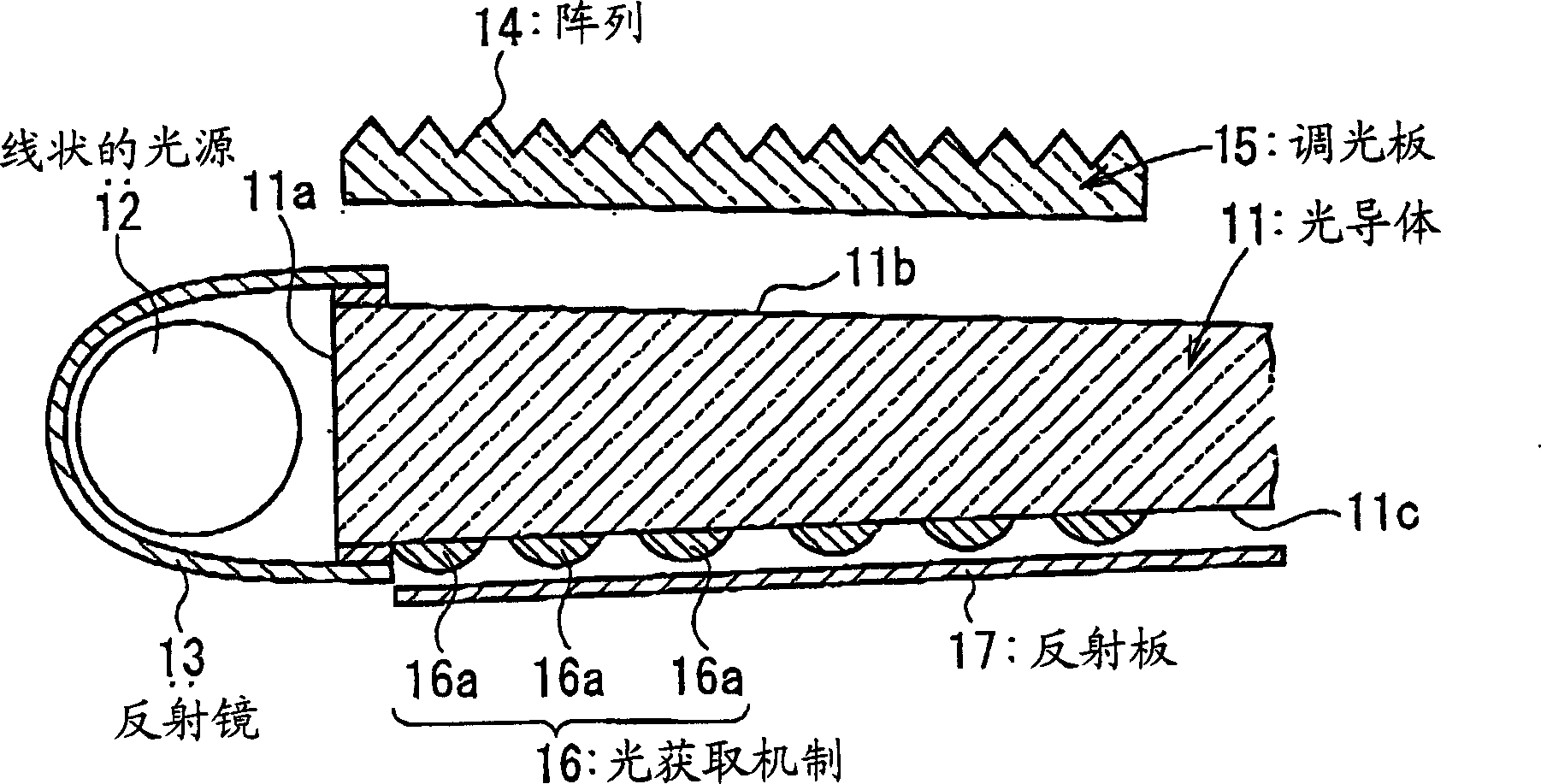Color liquid crystal display devices
A liquid crystal display device, color technology, applied in light guides, optics, instruments, etc., can solve the problems of not considering color filters, NTSC ultra-high color purity, weak light emission, etc.
- Summary
- Abstract
- Description
- Claims
- Application Information
AI Technical Summary
Problems solved by technology
Method used
Image
Examples
manufacture example 1
[0247] Manufacturing example 1: Manufacturing of backlight ①
[0248] 52 parts of red phosphor Y 2 o 3 : Eu (manufactured by Kasei Optonics Co., Ltd., trade name "LP-RE1"), 18 parts of Ba 0.9 Eu 0.1 O·(Mg 0.79 mn 0.21 )O·5Al 2 o 3 The green phosphor BaMgAl 10 o 17 : Eu, Mn (manufactured by Kasei Kodenshi Corporation, trade name "LP-G3") and 30 parts of blue phosphor BaMgAl 10 o 17: Eu (manufactured by Kasei Optoelectronics Co., Ltd., trade name "LP-B4"), mixed with nitrocellulose varnish into butyl acetate, fully mixed to make phosphor slurry, and coating the slurry on a tube with a diameter of The inner wall of the 2.3mm glass tube is dried and baked at 620°C for 5 minutes. Then, electrode mounting, evacuation, introduction of Hg and gas, sealing, etc. were carried out in the usual procedure to obtain a cold cathode ray tube for backlight.
[0249] Subsequently, as a photoconductor, a wedge-shaped annular polyolefin resin plate (manufactured by Geon Corporation, J...
manufacture example 2
[0254] Manufacturing example 2: Manufacturing of backlight ②
[0255] Using 40 parts by weight of red phosphor YVO 4 :Eu 3+ quasi-phosphor (manufactured by Kasei Photonics, trade name "MGV-620"), 22 parts by weight of green phosphor LaPO 4 : Ce, Tb phosphor (manufactured by Kasei Kodenshi Corporation, trade name "LP-G2") and 38 parts by weight of blue phosphor BaMgAl 10 o 17 : Eu (manufactured by Kasei Photonics Co., Ltd., trade name "LP-B4"), except that, it was produced in the same manner as in Production Example 1 to obtain a cold cathode ray tube for backlight, which was processed in the same manner as in Production Example 1 , get the backlight ②. The resulting relative luminescence spectra of the backlight are shown in Figure 6 .
[0256] The main emission wavelengths of the backlight ② are red: about 620 μm, blue: about 450 μm, and green: about 545 μm.
manufacture example 3
[0257] Manufacturing example 3: Manufacturing of backlight ③
[0258] Using 40 parts by weight of red phosphor YVO 4 :Eu 3+ quasi-phosphor (manufactured by Kasei Photonics, trade name "MGV-620"), 22 parts by weight of Ba 0.9 Eu 0.1 O·(Mg 0.79 mn 0.21 )O·5Al 2 o 3 The green phosphor BaMgAl 10 o 17 : Eu, Mn (manufactured by Kasei Kodenshi Corporation, trade name "LP-G3") and 38 parts by weight of blue phosphor BaMgAl 10 o 17 : Eu (manufactured by Kasei Photonics Co., Ltd., trade name "LP-B4"), except that, it was produced in the same manner as in Production Example 1 to obtain a cold cathode ray tube for backlight, which was processed in the same manner as in Production Example 1 , get the backlight ③. The resulting relative luminescence spectra of the backlight are shown in Figure 7 .
[0259] The main emission wavelengths of the backlight ③ are red: about 620 μm, blue: about 450 μm, and green: about 515 μm.
PUM
| Property | Measurement | Unit |
|---|---|---|
| thickness | aaaaa | aaaaa |
| diameter | aaaaa | aaaaa |
| diameter | aaaaa | aaaaa |
Abstract
Description
Claims
Application Information
 Login to View More
Login to View More - R&D
- Intellectual Property
- Life Sciences
- Materials
- Tech Scout
- Unparalleled Data Quality
- Higher Quality Content
- 60% Fewer Hallucinations
Browse by: Latest US Patents, China's latest patents, Technical Efficacy Thesaurus, Application Domain, Technology Topic, Popular Technical Reports.
© 2025 PatSnap. All rights reserved.Legal|Privacy policy|Modern Slavery Act Transparency Statement|Sitemap|About US| Contact US: help@patsnap.com



